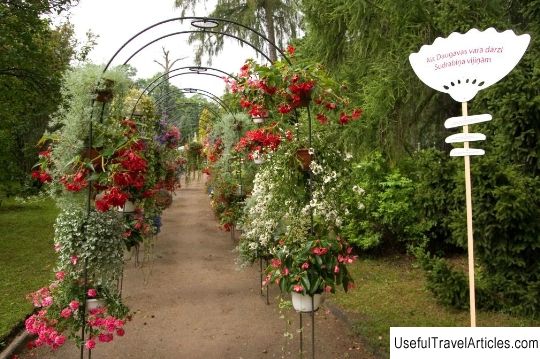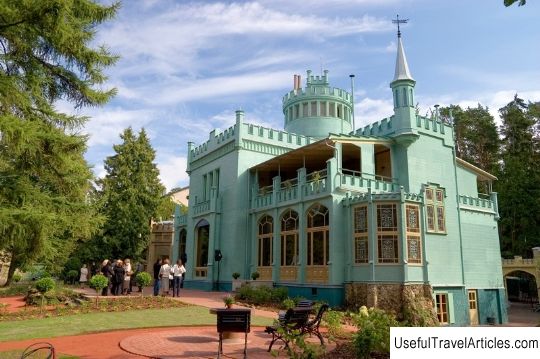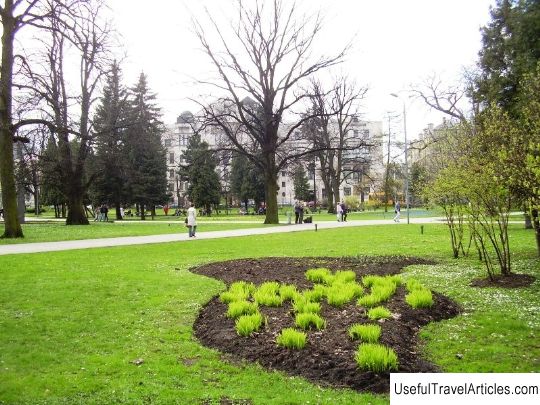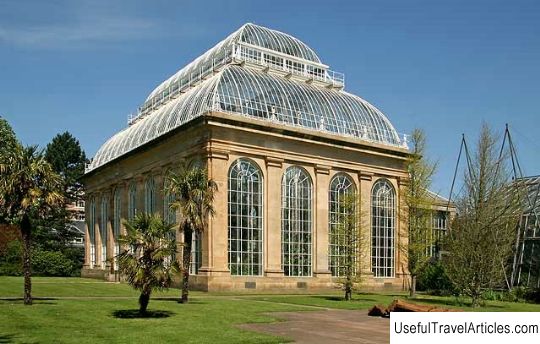Botanical Garden (Botaniskais darzs) description and photo - Latvia: Riga
Rating: 8,5/10 (354 votes) 
Botanical Garden (Botaniskais darzs) description and photo - Latvia: Riga. Detailed information about the attraction. Description, photographs and a map showing the nearest significant objects. The name in English is Botaniskais darzs. Photo and descriptionThe Botanical Garden of the University of Latvia is located in the capital of Latvia. It was founded in 1922 and has been continuously growing since then. Now, on the territory of 15 hectares, there are collections of 5400 various plants. The collections are unique, they represent plants of all continents and geographic zones. Each visitor to the Botanical Garden will be able to choose a plant for home, garden, water and other purposes from a wide range of plants presented. From the specialists working here, you can get comprehensive information on gardening and floriculture, as well as plant protection and care features. In addition, by prior arrangement, you can take part in seminars covering plant propagation issues, peculiarities of their cultivation, information on diseases and pests of plants, as well as their use in everyday life. In the greenhouses of the Botanical Garden of the University of Latvia, plants of the tropics, subtropics, succulents and azaleas are presented. The centerpiece of the greenhouse complex is the palm greenhouse, which features subtropical plants. The height of the palm greenhouse is 24 meters, about 400 plants are presented at the exhibition. There is a large collection of palms, represented by 48 species, as well as one of the oldest greenhouse plants - large-leaved ficus, which has been growing here since 1928. Here you can also look at the fruit crops of the subtropics: banana, fig, lemon, etc. In the greenhouse, where the flora of the tropics is presented, always high humidity and air temperature. Here you can see 350 plant species. The Aralia family, a collection of tropical ferns, and orchids are especially well represented. In the pools you can admire the largest plant of the water lily family - Victoria - which will be remembered for its fragrant flowers. There are about 700 plant species in the succulent greenhouse, 345 of which are cacti. Succulents are herbaceous or woody plants that have adapted to arid conditions. Cacti differ from other succulents by the presence of thorns. On the territory of the Botanical Garden there is another greenhouse, in which azaleas are represented. These are low evergreen shrubs obtained by multi-stage crossing. The first varieties appeared in Europe in the 19th century. The first collection of azaleas was created in the 30s of the 20th century, but it died during the Second World War. The collection began in 1956. At the moment, there are 124 cultivars in the collection. Herbaceous perennials appeared in the garden's collection in the 1920s and 1930s. 20th century, then the first rock garden was created. Around the middle of the last century, an exposition of alpine plants was created, arranged according to a geographical principle. Today, the exposition of herbaceous perennials numbers about 1300 varieties, the collection can be viewed from spring to autumn. The decorative and ecological exposition includes 7 gardens: a rocky garden, a phlox garden, a lily garden, a dahlia garden, a rhododendra garden, a rose garden, and a heather garden. Each of them can be divided into 3 groups of landings: background, main and additional. The most extensive exposition of open ground is the arboretum, covering an area of 9 hectares. It was founded in the 30s, the first seedlings were brought from a Berlin nursery. In the beginning, trees and shrubs were arranged according to a systematic principle, i.e. planting plants by family. However, this landing plan was only partially complied with. In the 50s. of the last century, a collection of thujas and cypresses was laid. Later, trees and shrubs were grown from cuttings brought from other botanical gardens. The newest and so far only one in Latvia is the exhibition of bog plants, created in 2006. On the territory of 120 m & sup2; conditions close to marsh have been created. Plants typical for Latvian swamps are grown here: andromeda, cranberry, etc. Since the founding of the Botanical Garden, work has been carried out to study mosses and lichens. On the territory of Latvia, about 500 species of moss have been recorded, about 40 species have been identified in the garden, they grow on the ground, roofs, stones and walls of greenhouses. In addition, mushrooms were found on the territory of the garden, which settled here spontaneously. Moreover, there are mushrooms both visible to the naked eye and microscopic. In the middle of summer, during the flowering of linden trees, a holiday is held in the botanical garden, bringing together gardeners, breeders, as well as gardeners who like to enjoy the achievements of Latvian gardeners, a variety of garden plants, get inspired by ideas for your garden and experience the summer, enjoying the magic of colors, sounds and smells. During the exhibition, you can buy and sell plants, goods and books on gardening.
        We also recommend reading Palazzo Reale description and photos - Italy: Cagliari (Sardinia) Topic: Botanical Garden (Botaniskais darzs) description and photo - Latvia: Riga. |




